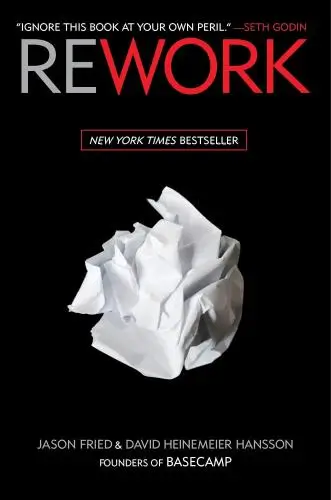
Rework
What's it about?
Rework is a refreshing business book that challenges traditional norms with its straightforward, no-nonsense approach. Jason Fried, co-founder of Basecamp, shares unconventional ideas on productivity, hiring, and growth. The book emphasizes simplicity, efficiency, and action over traditional corporate strategies. It's a must-read for entrepreneurs looking to shake up the status quo and find success on their own terms.
About the Author
Jason Fried is the co-founder and CEO of Basecamp, a project management software company. Known for his minimalist approach to business and work culture, Fried's book "Rework" challenges traditional corporate practices. He advocates for remote work, autonomy, and a focus on simplicity in all aspects of business. Fried's writing style is straightforward and practical, offering actionable advice for entrepreneurs and business leaders looking to streamline their operations and create a more productive work environment.
10 Key Ideas of Rework
Embrace the Power of Small Teams
Small teams are more agile, efficient, and can communicate more effectively than larger groups.
They can pivot quickly in response to changes or challenges, allowing for faster innovation and problem-solving.
By keeping teams small, each member's contribution becomes more significant, fostering a sense of ownership and accountability.
This setup encourages creativity and reduces the bureaucratic overhead that often slows down larger organizations.
Learn DeeperKeep Your Teams Lean: When starting a new project or initiative, resist the urge to add more people than absolutely necessary. Begin with a core team and only expand if specific skills are needed that aren't already covered.
Foster Open Communication: Encourage regular, informal check-ins among team members. This can be through daily stand-up meetings or a dedicated chat channel where everyone can share updates, challenges, and ideas freely.
Empower Decision-Making: Allow team members to make decisions related to their work without having to go through multiple layers of approval. This speeds up the process and makes them feel valued and trusted.
Celebrate Small Wins: Recognize and celebrate achievements, no matter how small. This boosts morale and keeps the team motivated. It also highlights the impact of each member's contribution.
Streamline Processes: Continuously look for ways to simplify and improve workflows. This could mean cutting unnecessary meetings, using project management tools to reduce email overload, or automating repetitive tasks.
- Example
A tech startup operates with a core development team of five members, each specializing in different areas such as front-end, back-end, UI/UX design, database management, and project management. They hold a brief daily stand-up meeting to update each other on progress and roadblocks, allowing for quick adjustments and support.
- Example
A small marketing agency assigns a team of three for a new client project: a strategist, a content creator, and a designer. They work closely with the client through a shared communication platform, enabling fast feedback loops and adjustments to the campaign strategy based on real-time data analysis.
Focus on What Won't Change
Focusing on aspects of your business that are likely to remain constant over time ensures long-term relevance and sustainability.
These could include great customer service, high-quality products, or fast delivery times.
By concentrating on these stable elements, you invest in areas that provide lasting value to your customers, rather than chasing fleeting trends or technologies that may become obsolete.
Learn DeeperIdentify Your Constants: Take a moment to reflect on what aspects of your business or service have remained popular or essential over time. These could be things like your commitment to customer satisfaction, the quality of your product, or the efficiency of your service. Make a list of these constants.
Allocate Resources Wisely: Once you've identified your constants, prioritize investing in these areas. This could mean allocating more budget towards customer service training, ensuring product quality through rigorous testing, or streamlining your delivery process for speed.
Monitor and Adapt Without Losing Core Values: While focusing on what won't change, stay open to feedback and trends that could enhance these constants. For example, if technology can make your fast delivery even faster without compromising quality, consider integrating it. However, ensure that any adaptation or addition aligns with your core values and constants.
Communicate Your Constants: Make sure your customers know what your constants are. Use your marketing channels to highlight your unwavering commitment to these aspects. This not only reinforces your brand identity but also builds trust with your customers.
- Example
A local bakery that prides itself on using traditional baking methods might focus on maintaining the high quality of its ingredients and the authenticity of its recipes. Even as it introduces new products, it ensures they adhere to these constants.
- Example
An online retailer known for its fast delivery times might invest in logistics and technology that ensure this speed is maintained or improved, even as it expands its product range. It might also highlight this constant in its marketing efforts to reinforce its brand promise.
Launch Now, Perfect Later
Waiting for a product or service to be perfect before launching it can lead to missed opportunities and stalls progress.
Instead, aim to get your offering out into the market as soon as it delivers value, even if it's not yet flawless.
Early feedback from real users is invaluable and can guide further development more effectively than internal speculation.
This approach also builds momentum and keeps your team motivated by seeing tangible results.
Learn DeeperStart with a Minimum Viable Product (MVP): Identify the core features that solve the main problem your product or service is addressing. Focus on these and resist the urge to add more until after your launch.
Gather Feedback Early and Often: Once your MVP is live, actively seek out feedback from your initial users. Use surveys, direct communication, and social media to understand their experience and what improvements are most needed.
Iterate Quickly: Based on the feedback, make improvements to your product or service. Prioritize changes that will have the biggest impact on user satisfaction and experience.
Celebrate Small Wins: Share progress and updates with your team and early users. This builds momentum and keeps everyone engaged and motivated.
Stay Flexible: Be prepared to pivot or make significant changes based on user feedback. The goal is to serve your customers' needs, even if it means deviating from your original plan.
- Example
A tech startup launches a basic version of their app that allows users to perform the primary function but lacks some planned features. They use early adopter feedback to prioritize and add new features over time.
- Example
A small bakery starts by offering a limited menu of their most unique items instead of waiting until they can provide a full range. They then expand their offerings based on customer preferences and demand.
Meetings Are Toxic
Meetings often consume valuable time without yielding proportional benefits.
They can interrupt deep work, dilute responsibility, and delay decision-making.
To minimize their negative impact, reserve meetings for discussions that truly require real-time collaboration.
Whenever possible, opt for asynchronous communication methods, such as email or project management tools, which allow team members to contribute at their own pace without disrupting their workflow.
Learn DeeperEvaluate the necessity of each meeting: Before scheduling a meeting, ask yourself if this discussion could be effectively handled through an email, a shared document with comments, or a project management tool. If the answer is yes, opt for those methods instead.
Implement a clear agenda: If a meeting is necessary, ensure it has a clear, concise agenda circulated in advance. This helps participants prepare and keeps the meeting focused and efficient.
Limit attendance: Only invite individuals who are directly involved in the topic at hand. This reduces the time commitment for everyone and ensures that those in the meeting can actively contribute.
Set a strict time limit: Begin every meeting with a clear end time and stick to it. This encourages efficiency and respects everyone's time. Consider methods like the Pomodoro Technique, setting meetings for 25 minutes with a hard stop.
Encourage asynchronous communication: Foster a culture where asynchronous communication is valued. Use tools like Slack, email, or project management platforms for updates and discussions that don't require immediate feedback, allowing team members to respond when it best fits their workflow.
- Example
Instead of holding a weekly hour-long team meeting to update on project progress, you could switch to a shared online document where each team member updates their progress weekly. This document can be reviewed at any time by anyone on the team, saving everyone an hour each week.
- Example
For decision-making that doesn't require immediate consensus, use an email thread or a dedicated channel in a team communication tool. Pose the question or decision point, and give team members a set timeframe (e.g., 48 hours) to contribute their thoughts and feedback. This allows for thoughtful responses and doesn't disrupt the flow of work.
Embrace Constraints
Constraints, whether in terms of time, budget, or resources, can actually fuel creativity and efficiency.
They force you to prioritize and focus on what's truly essential, leading to innovative solutions that might not have been considered under more lenient circumstances.
Instead of viewing limitations as obstacles, see them as opportunities to streamline your processes and think outside the box.
Learn DeeperPrioritize ruthlessly: Start by identifying the most critical components of your project or task. Ask yourself, 'If I could only achieve one thing here, what would it be?' This helps you focus on what truly matters.
Set strict deadlines: Even if you have more time available, artificially limit your timeline to force decision-making and prevent procrastination. For example, if you think a task will take a week, give yourself three days.
Limit resources on purpose: Allocate fewer resources than you think you need. This could mean budget constraints, fewer team members, or limited materials. It encourages creative problem-solving and resourcefulness.
Embrace minimalism in your solutions: Instead of trying to cover all possible bases, aim for the simplest solution that effectively solves the problem. This often leads to more elegant and efficient outcomes.
Regularly review and adjust your constraints: As you progress, periodically assess whether the constraints are still serving their purpose of fostering creativity and efficiency. Adjust as necessary to maintain a productive tension.
- Example
A software development team is given two months to deliver a new product feature, but they decide to aim for a functional prototype in just four weeks. This forces them to focus on the core functionality, resulting in a streamlined and effective feature set.
- Example
A marketing team has a limited budget for a campaign. Instead of spreading the funds thinly across multiple channels, they choose to invest in one platform where their target audience is most active. This constraint leads to a highly targeted and successful campaign.
Deeper knowledge. Personal growth. Unlocked.
Unlock this book's key ideas and 15M+ more. Learn with quick, impactful summaries.
Read Full SummarySign up and read for free!
Rework Summary: Common Questions
Experience Personalized Book Summaries, Today!
Discover a new way to gain knowledge, and save time.
Sign up for our 7-day trial now.
No Credit Card Needed

Similar Books

Emotional Intelligence at Work
Dalip Singh
Seeing the Big Picture
Kevin Cope
Leadership Is Concept Heavy
Dr. Enoch Antwi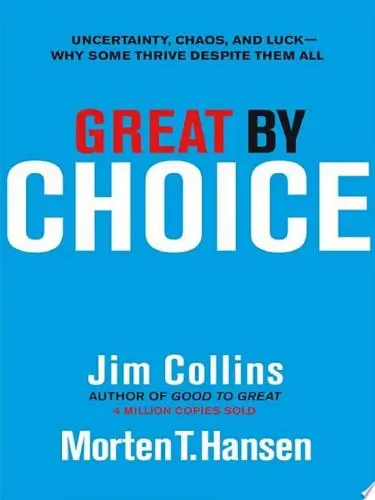
Great by Choice
Jim Collins
The Leader′s Guide to Coaching in Schools
John Campbell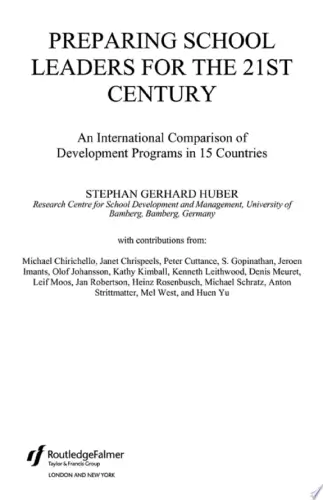
Preparing School Leaders for the 21st Century
Stephan Gerhard Huber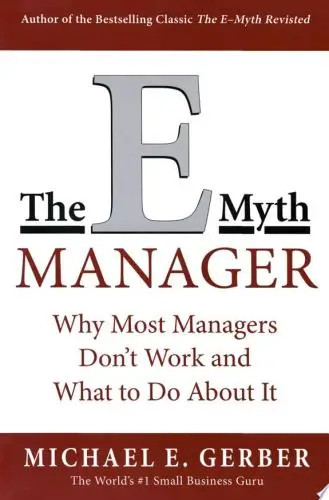
The E-Myth Manager
Michael E. Gerber
Leadership Is Language
L. David Marquet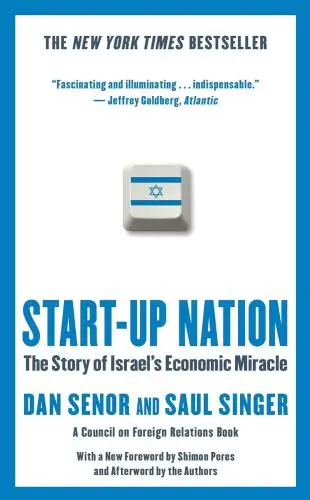
Start-up Nation
Dan Senor
The Founder's Dilemmas
Noam WassermanTrending Summaries

Peak
Anders Ericsson
Never Split the Difference
Chris Voss
Smart Brevity
Jim VandeHei
The Psychology of Money
Morgan Housel
The First 90 Days
Michael D. Watkins
Atomic Habits
James Clear
Thinking, Fast and Slow
Daniel Kahneman
The Body Keeps the Score
Bessel van der Kolk M.D.
The Power of Regret
Daniel H. Pink
The Compound Effect
Darren HardyNew Books

The ^AOxford Handbook of Job Loss and Job Search
Ute-Christine Klehe PhD
Job Interviews For Dummies®
Joyce Lain Kennedy
Job Interviews In A Week
Alison Straw
Handbook of Career Development
Gideon Arulmani
The Art of Spending Money
Morgan Housel
$100M Offers
Alex Hormozi
A Candle for Kiri
Edna Mae Holm
Principles of Marketing, Global Edition
Gary Armstrong
Serpent Rising: The Kundalini Compendium
Neven Paar
